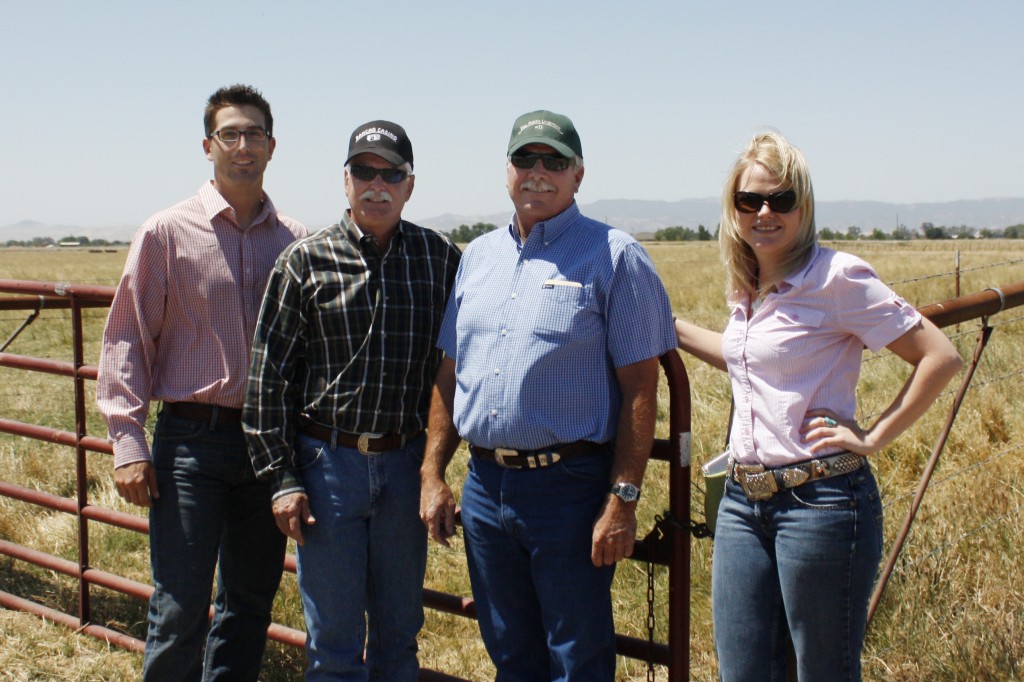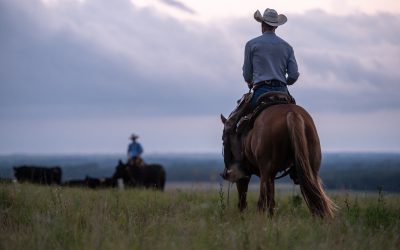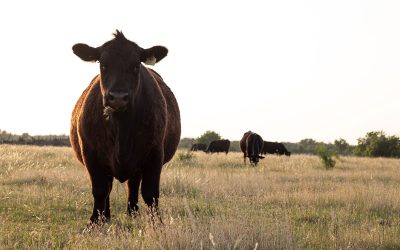
Opportunities to be thankful for
November 25,2011
The list of things for us to be grateful for at Certified Angus Beef LLC this year is a long one — another record sales year for our licensed partners, more cattlemen and women like you who work hard to supply the brand, and a team of co-workers who are really a pleasure to work with.

We mentioned earlier this week that one CAB family welcomed a new little beef eater into the world this month — we’re thankful that mom Miranda and little Cassidy are both doing well.
With Miranda on leave tending to motherly duties for the next couple months, we’re especially thankful right now for our team of interns who pitch in when we’re spread thin. Each year, we hire two to four students from across the nation for a semester or summer. They may work remotely from their campus homes or spend the summer in our Manhattan, Kansas office.
You’ve met a few of those past and present interns here on the blog — Kristen down in Texas, Jen from Oklahoma and Anthony in California. You may recognize a trend when reading these three blog entries – our interns are great writers; they’re smart, savvy and ready to learn more about the cattle industry. They’re self-starter with big ambitions. They bring new ideas and different writing styles to the table and breathe life into new projects they can make their own.
Know any college students who fit that description? Send them our way. We’re accepting applications for three Industry Information internships; paperwork is due Dec. 1. Read the full job description and details here.
As a former CAB intern myself, I can say with confidence this is a job opportunity any college student could be thankful for. But you hear (read) me talk all the time — take it from one of our current collegiate stars, Anthony Pannone:

“Working with the CAB Industry Information team has been nothing short of prime. It’s an opportunity to test skills you’ve learned in the classroom and see how they fair against the pros – an experience that will fulfill any young person’s desire to write.
“In class you train for these opportunities, and when it pops up on a ranch in a feedyard there’s no turning back—it’s go time. Despite the pressure, hanging with the cattlemen and cattlewomen is the best. You’re reminded people and their relationship to their animals are behind the scenes yet so crucial to the success of contemporary agriculture. The story behind agriculture is what people need, and want, to know. This internship is your chance to tell a part of agriculture’s story.
“Whether writing a feature story, blog, or Facebook post, you’re taking one step toward self-actualization as an agricultural communicator. It’s important to understand that today’s agricultural communicators don’t just write about agriculture; they write about the culture behind the farm or ranch. Agriculture contains the stories of people who do more than produce food. This is the new look of agricultural communicators.”
Does Anthony’s experience sound like something you or a student you know would be interested in? Then snap out of that turkey hangover and get to work on the application today! As always, call 330-345-2333 or email lnelson@certifiedangusbeef.com with questions. Yes, I’ll use this work again — we’d be thankful to hear from you and have you on our team!
You may also like
Progress from small steps
Every day is a chance to learn and get better. Thousands of others like my new friends in Alabama are taking steps to meet the shifts in consumer demand, and to know more. Small steps in the right direction can start now. Even if it’s just recording a snapshot of where you are today, a benchmark for tomorrow.
Not perfect, but working to get better
The CAB Cattleman Connection team heard its name called more than once in the virtual ceremonies, and each time came a sense of personal accomplishment, but even better: confirmation that we’re getting better at our craft. I hope that means we’re doing a better job for you.
Beefed up findings
Frank Mitloehner presents his findings on the animal ag sector’s impact on global warming. He explains how cattle counterbalance other fossil fuel sectors, proving that cattle are a solution and not a threat.



